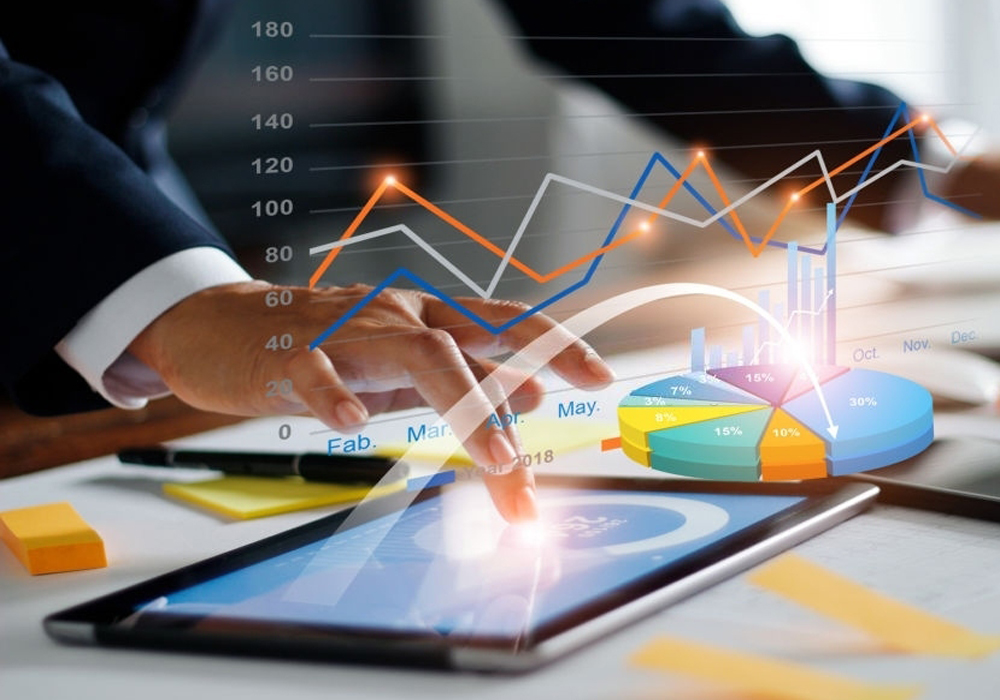Owing to the digitalization of the modern market, Competition appears to be the norm of the day, and every business is looking for ways to outperform its competitors. Due to global e-commerce trends, big data has made its way into more advanced customer analysis and marketing methods. In 2017, ‘The Economist’ claimed that ‘the world’s most valuable resource is no longer oil, but data’. Businesses that understand this statement continuously collect data from various sources and utilize it to make better and more informed decisions. Today we will discuss how you can leverage this ‘big data’ in the retail industry for business growth and productivity.
What is big data in the Retail Industry
Every industry has been affected by the enormous data explosion in the last decade, but no one experienced the dynamic drift as the retail industry. Big data impacts the retail sector since it creates large amounts of data in various formats at high speeds. Big Data in retail refers to the large amounts of structured and unstructured data that businesses acquire from a variety of sources, including point-of-sale systems, customer loyalty programs, social media interactions, and web browsing behaviors.
Big data analytics for retail has allowed businesses to multiply their revenue with targeted campaigns and timely decisions based on the insights from the big data. Retail businesses can see a profit margin of up to 60% with the help of big data analysis.
How to leverage big data in retail for business growth

In retail, customers expect businesses to provide them with a seamless and personalized shopping experience no matter the medium of purchase. These customers’ demands can be met by collecting, analyzing, and interpreting big data. The uses of big data in retail to leverage it for growth and profitability are:
1. Personalized Marketing Efforts
A retailer must try to provide a shopping experience for its customers based on their buying habits and preferences. This is made possible by big data analytics in retail. 71% of millennial and Generation Z consumers expect retailers to provide tailored content. Business expansion is directly related to customer satisfaction and ideal shopping experience. Tailored marketing, custom deals, and personalized recommendations help you achieve that better customer satisfaction level. Big Data also allows retail branding strategies and you can customized coupons for users based on their purchasing data.
2. Supply Chain Management
Retailers face continued obstacles in managing their supply networks efficiently. Big Data enables businesses to manage inventory levels in real time, estimate demand more accurately, and optimize operations. A good big data in retail example is Walmart, which utilizes data to ensure optimum levels of stock and streamline the distribution. The analysis provides insights into which products run out fast and what external factors contribute to the supply chain. Informed decision-making based on big data allows high productivity in a shorter time frame.
3. Price Optimization
Big data in retail can help companies to strategically price their products and services by studying the buying behavior of the consumers, the competition, and the prevailing trends in the market.
This data can also help in understanding and mitigating other crimes including some types of fraud such as return and credit card fraud as well as identity fraud. It is easier to combat industrial crimes such as fraud by studying changes in consumer behavior.
4. Targeted Campaigns
The implementation of big data use cases in retail goes even further. It provides the possibility of running optimized advertisements. Target marketing can eliminate waste in resource expenses. Big data can group users based on their interests, behaviors, preferences, and so on. This makes it possible for advertisers to allocate marketing efforts to specific groups of people. Because of this targeting, companies can focus their recommendations and advertisements better on interested people resulting in increased conversion rates.
Predictive Analysis of Trends
Innovation and digitalization have caused disruptions in the retail industry. The application of big data analytics in retail can reduce disruption through predictive analysis. The global predictive analytics market is valued at $12.49 billion and is predicted to develop at an exponential rate. Big data analysis allows businesses to anticipate the shopping activities of customers based on their previous consumer patterns. They can also foretell future market trends and the popularity of new products by analyzing customer preferences in the past.
Challenges of Big Data Analytics for Retail
The influence of big data in the retail sector is immense. Although still in use, up to 68% of big data in retail remains unused. There are several factors for such high statistics. As defined by Datafloq, large-scale data presents certain challenges in the retail industry:
- Data Volume: Large amounts of data from multiple sources such as online channels and stores can be difficult for retailers to handle and store.
- Quality of data: Unreliable or missing data provides poor conclusions and forecasts disrupting processes within the organization.
- Data Assurance: It is necessary to combine all available data from different sources, such as online, in-store, or social networks. Integrating the data is a very challenging task.
- Issues of data privacy: Retailing activities must comply with several laws and regulations of data security and privacy which makes it hard for companies in big data analysis.
- Workforce Requirement: Another challenge faced by big data analysis is the shortage of qualified data workers.
It is important to overcome all of these barriers for retailers to obtain the full potential of Big Data Analytics in retail.
Key Takeaway
To conclude, unlocking new business growth opportunities from big data in retail during such a competitive period and market can be tricky. Businesses that prioritize data analytics and take a data-driven approach can get a better understanding of their consumers, optimize their processes, and discover development opportunities. So don’t wait out, start your big data analytics journey now and discover new opportunities for business growth and innovation.
The post How To Leverage Big Data in Retail Industry for Growth and Innovation appeared first on Datafloq.

